Mastering Pool Care: Safe Muriatic Acid Use for Crystal Clear Water
January 07th, 2025
January 07th, 2025
In the world of pool maintenance, muriatic acid stands as both a powerful ally and a potential hazard. Known for its ability to effectively lower pH levels and maintain water clarity, this chemical demands respect and careful handling. Years ago, while tackling my own pool's stubborn pH imbalance, I found myself standing in the hardware aisle, holding a bottle of muriatic acid with a mix of curiosity and caution. The label warned of its potent nature, yet promised sparkling results if used correctly.
Understanding the essence of muriatic acid is crucial before diving into its application. Composed primarily of hydrochloric acid, this substance can dramatically alter the water chemistry, ensuring your pool remains free from unsightly scaling and cloudy water. However, improper use can lead to skin irritations or even damage to your pool's surfaces. Hence, knowledge and preparation become your greatest allies.
Safety should always be your priority. Start by equipping yourself with the right protective gear—gloves, goggles, and a mask can spare you from unwanted accidents. Additionally, timing plays a crucial role; early mornings or late evenings, when the sun is not at its peak, provide the best conditions for handling this chemical safely. Your pool's health, and your own, depend on these cautious steps. With the right approach, muriatic acid transforms from a daunting chemical into a trusted partner in pool care.
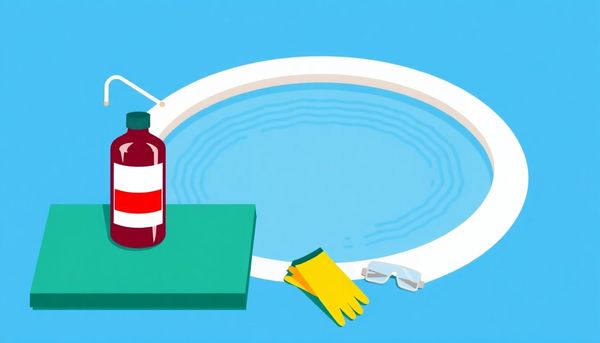
Handling muriatic acid requires more than just caution; it demands a commitment to safety that should never be underestimated. This substance is potent, and even a small mishap can lead to serious consequences. My neighbor once learned this the hard way when he decided to add a bit of acid to his pool without the proper gear. A splash landed on his arm, and let's just say, a quick rinse with water became an urgent trip to the doctor.
To prevent such incidents, investing in the right safety gear is essential. Start with acid-resistant gloves, which act as your first line of defense against skin burns. Goggles are equally important, providing a safeguard for your eyes against splashes and fumes. A chemical-resistant apron protects clothing and skin from accidental spills, ensuring that an errant drop won’t ruin your day or your favorite shirt. Additionally, wearing a mask designed to filter out fumes is crucial to protect your lungs from the acid's harmful vapors, especially when handling large quantities or working in enclosed spaces.
Remember, these items are not optional extras but essential tools in your pool maintenance arsenal. As you suit up, think of it as donning armor before heading into battle. It might feel excessive, but it’s better to be overly cautious than to wish you had been.
When dealing with muriatic acid, a key priority is safeguarding oneself from its corrosive nature. Muriatic acid, although diluted for pool use, remains a formidable chemical capable of inflicting serious harm. Protective clothing serves as your armor in this chemical battle. Picture stepping into your workspace equipped like a scientist ready for an experiment—you wouldn’t dare proceed without suiting up first. Coveralls or acid-resistant overalls are your first line of defense, preventing any accidental splashes from reaching your skin.
On a warm summer afternoon, I remember helping a friend with their pool maintenance. The sun was scorching, but we resisted the temptation to dress lightly. Instead, we donned long sleeves and full-length pants made from acid-resistant materials. This extra layer might feel cumbersome, yet it's a small price to pay for safety. Besides clothing, ensure you're wearing thick rubber gloves and sturdy footwear. These help guard against spills and splashes that could otherwise lead to painful burns.
A face shield or safety goggles are indispensable when handling muriatic acid. Protecting your eyes and face from potential splashes and fumes isn't just precautionary—it's essential. An unexpected gust of wind can carry fumes toward you in a heartbeat. Finally, a respirator mask ensures you’re not breathing in harmful vapors. While it may seem excessive, remember that proper gear transforms an otherwise risky task into a routine part of pool care.
When working with muriatic acid, using the right equipment is essential to ensure both safety and efficiency. This isn’t just a recommendation; it’s a necessity. Imagine handling a substance that’s as corrosive as this acid. You wouldn’t want it eating away at your tools, let alone risking your safety, right? Opt for gear made from acid-resistant materials such as polyethylene or certain types of rubber. These materials stand strong against the corrosive nature of muriatic acid, unlike metal or standard plastics that can deteriorate rapidly.
In my own experience with pool maintenance, investing in durable tools made all the difference. I recall a neighbor who used a regular plastic bucket to mix the acid. The bucket didn’t last long, and he ended up with a small spill to clean—a minor incident, but one that could have been much worse. Since then, a simple switch to an acid-resistant bucket allowed me to handle the acidic solutions without worry.
Furthermore, consider protective clothing as part of your equipment arsenal. Acid-resistant gloves and goggles are non-negotiables when dealing with muriatic acid. These provide vital protection against accidental splashes that can cause skin burns or eye irritation. By choosing and using the right acid-resistant equipment, you're not just preserving your pool’s quality but also safeguarding your health and well-being.
When it comes to working with muriatic acid, ventilation becomes your best ally. Handling this potent acid isn't just about careful measuring and cautious pouring; it's also about ensuring the environment around you is safe. Imagine you're in a kitchen experimenting with a new recipe; the aroma can either be inviting or overwhelming. Similarly, muriatic acid can release fumes that are hazardous to health if not managed properly.
Open spaces are your friend when dealing with muriatic acid. Opt for working poolside, ideally with a gentle breeze to disperse fumes swiftly. Keeping your work area airy can make all the difference in preventing inhalation of these dangerous gases. Wearing a respirator or a mask designed for chemical fumes becomes crucial if you find yourself in a more enclosed setting.
From personal experience, I remember a time when I thought a garage would be perfect for mixing pool chemicals, only to realize the fumes were too much to handle. A quick relocation to the open patio not only made the task safer but also much more bearable.
In addition to being mindful of your immediate environment, consider the time of day. Early mornings or late afternoons, when the sun is less intense, typically offer more comfortable conditions for the task at hand. Remember, ventilation isn’t just a box to tick off; it’s a vital component of safely using muriatic acid and ensuring a smooth, hazard-free pool maintenance session.
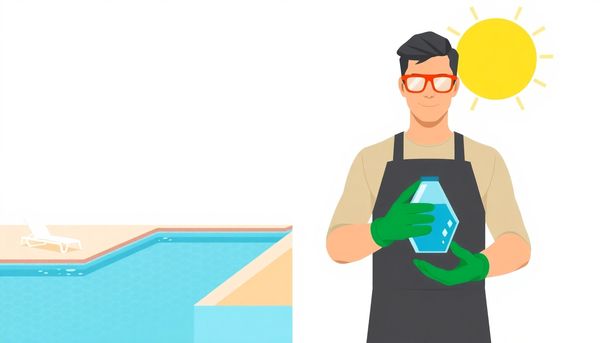
Handling pool chemicals requires a dash of caution mixed with a sprinkle of know-how. When it comes to balancing pool chemistry with muriatic acid, safety isn't just an added bonus—it's a necessity. Once, while helping a friend with his backyard pool, I learned firsthand how vital the right approach is to ensure everything goes smoothly, without any unwanted chemical surprises.
Firstly, gear up properly. Muriatic acid is notoriously corrosive, so protecting your skin and eyes with gloves and goggles is non-negotiable. Always have a reliable test kit on hand, whether it's digital or high-quality strips, to keep track of your pool's pH and alkalinity levels. Knowing your pool's exact water volume is also crucial before adding any chemicals. Trust me, guessing could lead to a chemical cocktail that’s best avoided.
Incorporating muriatic acid into your pool routine should be a gradual process. Start by diluting the acid in a bucket of water, maintaining a safe water-to-acid ratio of about 10:1. This dilution makes it easier to handle and reduces the risk of splashback. Pour the mixture slowly into the deepest part of your pool while standing upwind to avoid the fumes.
After adding muriatic acid, let your pool pump circulate the water, mixing the acid thoroughly. This process not only helps in achieving an even distribution but also prevents any localized damage to your pool surfaces. Always keep a watchful eye on the changes in your water chemistry, adjusting and repeating the process as necessary, until your pH and alkalinity nestle comfortably within their optimal ranges.
Handling muriatic acid demands a mindful approach—think of it as managing a potent yet beneficial ally in your pool care arsenal. This acid, while instrumental in adjusting your pool’s alkalinity and pH levels, is not to be underestimated. Its corrosive nature means that, without appropriate precautions, it can cause severe damage to your skin, eyes, and respiratory system. Don’t leave safety to chance; gear up with protective goggles, acid-resistant gloves, and a good-quality respirator mask to shield yourself from potentially harmful exposure.
When it comes to using muriatic acid, patience is your best friend. Measure your pool’s volume and current chemistry levels accurately before making any additions. Rather than rushing, add the acid in small increments, ideally no more than ½ gallon at a time, and allow it to circulate for several hours between doses. Forget the temptation to dump and dash; giving the acid time to work its magic helps you avoid overcorrection, which could lead to more problems down the line.
If you’re diluting the acid before use, remember the golden rule: always add acid to water, never the reverse. This practice minimizes the risk of dangerous splashes. For direct additions, pour slowly into the deep end and carefully steer clear of the fumes. With diligence and respect for the chemical, muriatic acid becomes a safe and effective tool in maintaining a sparkling, balanced pool environment.
In the world of pool maintenance, managing water chemistry is both an art and a science. Lowering pool alkalinity safely with muriatic acid requires careful planning and execution. To start, ensure you have the necessary protective gear: gloves, goggles, and a mask to guard against the acid's corrosive nature. My friend once shared a cautionary tale of accidentally splashing some on her shoes, which led to a quick trip to the store for replacements. It's a reminder of the acid's potency.
Next, understanding your pool’s size is crucial. For an accurate adjustment, first calculate the water volume and then use a reliable test kit to gauge current pH and alkalinity levels. Precision is your ally here. If your pool holds 15,000 gallons, and your alkalinity reads 150 ppm, a rough guideline is to add 20 ounces of muriatic acid to lower it by 10 ppm. But remember, less is more; you can always add more but can't take it back.
When adding the acid, turn off your pump and water features, and wait for the water to still. Diluting the acid in a 10:1 water-to-acid ratio before introducing it to the pool minimizes risks and helps distribute it safely. Slowly pour the mixture into the deep end, avoiding the creation of an “acid hot spot.” Afterward, reactivate the pump and let it circulate for at least five hours before retesting the water. This staged approach prevents sudden chemical shifts and safeguards your pool's infrastructure.
Remember, balance is key. If your pH drops too low during this process, natural aeration can gently elevate it again without upsetting alkalinity. And if you ever find yourself stuck, consulting with a pool professional can ensure that your aquatic haven remains a safe and enjoyable retreat.
There’s a quiet satisfaction in knowing that your pool filters are as clean as the clear blue water they help maintain. When it comes to tackling stubborn mineral deposits and grime, muriatic acid stands as a formidable ally. Though it’s best known for balancing pH levels, its prowess in cleaning pool filters is unparalleled. But how does one go about using this potent substance without causing harm to oneself or the equipment?
First, gather your protective gear; gloves, goggles, and a mask are non-negotiable. The acid’s fumes are not to be underestimated. Once you’re ready, mix the muriatic acid with water, always following the cardinal rule: add acid to water, never the reverse. This prevents sudden reactions that could lead to splashes or hazardous fumes. For effective cleaning, a ratio of 20:1 (water to acid) usually suffices.
Next, immerse the cartridges or D.E. grids in the solution. Allow them to soak for about 15 to 20 minutes. This gives the acid time to dissolve calcium buildup and other residues that regular hosing might miss. While they’re soaking, take this moment to double-check your pool’s pH and alkalinity levels—muriatic acid’s dual role ensures you’re multitasking without any effort.
After soaking, rinse the filters thoroughly with clean water. This step is crucial to remove any acidic residue before reinstalling the filters. And remember, properly dispose of the used acid solution; releasing it directly into the environment is a big no-no. With these steps, your filters will be primed to keep your pool sparkling, making every swim as refreshing as the last.

Cleaning pool filters may seem daunting, but with the right approach, it becomes a manageable task. In the realm of pool maintenance, a clean filter is vital for sparkling water and efficient operation. Using muriatic acid to clean cartridge or D.E. filters is a proven method that can yield impressive results if done safely and effectively.
Start by gathering your safety gear: gloves, goggles, and a mask. The importance of safety cannot be overstated when handling muriatic acid, given its corrosive nature. Protecting your skin and lungs from its fumes is paramount. Next, prepare a cleaning solution. A 20:1 ratio of water to muriatic acid is typically recommended for filter cleaning. Always add the acid to water, not the other way around, to prevent dangerous splashes.
Once your solution is ready, immerse the filter elements completely, allowing them to soak for about 20 to 30 minutes. This soak will help dissolve any calcium buildup and organic residues that might be clogging the filter’s pores. After the soak, rinse the filters thoroughly with clean water to ensure no acid remains, which could harm your pool’s water chemistry.
A friend once shared how this method revived his filters, saving him from replacing them prematurely. The key takeaway? Regular, proper cleaning can extend your filters’ lifespan significantly, keeping your pool running smoothly and efficiently. Remember, while muriatic acid is a powerful ally in pool maintenance, it demands respect and careful handling.
Handling muriatic acid requires a cautious approach, much like navigating a winding mountain road. This potent substance, though beneficial for maintaining your pool's chemical balance, demands respect. Before you even crack open that bottle, arm yourself with the right gear: protective eyewear, acid-resistant gloves, and long sleeves. Consider this the first step in a dance that keeps you safe from harm.
Recalling a time when a friend underestimated the fumes while adding acid to his pool, the vivid tale of his discomfort serves as a valuable lesson. Always work in a well-ventilated area to avoid inhaling harmful vapors—these invisible threats can swiftly turn an afternoon task into a trip to the doctor.
When it's time to mix, never pour acid directly into water without a plan. Using a dedicated, acid-resistant bucket, add water first, then slowly introduce the acid. This method prevents splashes and reduces the chance of accidental skin contact. My neighbor once skipped this step, and the resulting splashback was a harsh teacher.
As you pour the diluted mix into your pool, gracefully step away to avoid the rising fumes. Circulate the water thoroughly, perhaps remembering how a gentle stir in cooking yields the most consistent blend. Lastly, patience is your ally—test and retest your pool's pH levels, ensuring everything is in harmony before the next swim. Safe practices transform muriatic acid from foe to friend in your pool care routine.
Balancing the alkalinity and pH in your pool isn't just about numbers on a test strip; it's about ensuring your pool is a safe and enjoyable place to swim. High alkalinity and pH levels can transform your pool from a crystal-clear oasis into a breeding ground for algae and bacteria. When these levels soar, the effectiveness of chlorine decreases, leaving your pool vulnerable to unwanted guests. Not to mention, high pH can cloud your water and lead to unsightly scaling on your pool surfaces and equipment.
Think of alkalinity as the steadying hand that keeps your pH from swinging wildly. When alkalinity is too high, it drags the pH up with it, leading to an imbalance. Muriatic acid is your secret weapon here. It works by reducing both alkalinity and pH to their optimal ranges, typically between 100-150 ppm for alkalinity and 7.4-7.6 for pH. This balance ensures that chlorine remains effective, keeping your pool water safe and clear.
For those who prefer a more hands-on approach, remember to add muriatic acid gradually. Never rush the process; patience pays off. By adding the acid slowly, you give your pool time to adjust, making it easier to reach that perfect equilibrium where swimming is a pure pleasure, free from the worry of chemical imbalance.
A spotless pool experience often starts with clean filters, and muriatic acid can be your secret weapon. Consider a day when your pool seems less inviting, with cloudy water or poor circulation. The culprit might just be clogged filters. That's where muriatic acid steps in, offering a deep-cleaning solution.
Begin by ensuring you have the necessary safety gear: gloves, goggles, and protective clothing. Muriatic acid, though less concentrated than industrial hydrochloric acid, remains a potent chemical. Next, prepare a 20:1 water-to-acid solution in a large, acid-resistant container. Always add the acid to the water, never the reverse, to prevent a hazardous reaction.
Submerge your cartridge filters or D.E. grids into this mixture, allowing them to soak for about 30 minutes. This soaking process dissolves the tough calcium deposits and organic debris that can hinder your pool's performance. As the acid works, you might notice the water bubbling slightly—evidence of the acid breaking down unwanted buildup.
Once the soak is complete, carefully remove the filters and rinse them thoroughly with a garden hose. Make sure no acid residue remains, as it can cause damage if left unchecked. Reassemble your filter system, ensuring everything is securely in place, and return to enjoying a cleaner, clearer pool. Remember, a little maintenance with muriatic acid can go a long way in keeping your pool pristine.
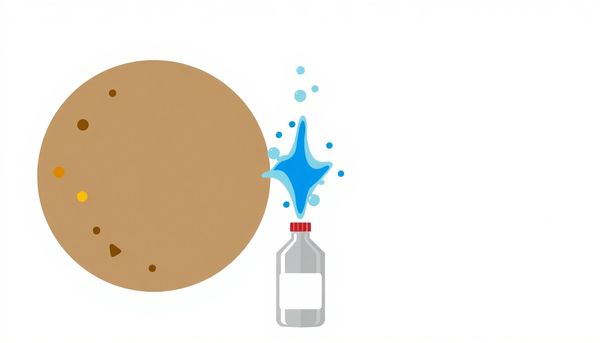
Handling muriatic acid to lower your pool's alkalinity demands precision and care. Imagine waking up to a sparkling, inviting pool, only to discover the water chemistry is off-kilter. High alkalinity, a stealthy disruptor, can cause scaling, cloudy water, and render your chlorine less effective, opening the door for algae. Fortunately, with a bit of caution and know-how, muriatic acid can be your ally in restoring balance.
Begin by equipping yourself with the right tools: safety goggles, sturdy gloves, and a mask to protect against harsh fumes. It’s not just about donning gear; it’s about creating a safe environment. Ensure the pool pump is off to halt water movement, preventing acid dispersion before it can work its magic. Dilute the acid cautiously, adding it to a bucket of water—not the other way around—to avoid splashback. A 10:1 water-to-acid ratio keeps things manageable.
When pouring the diluted solution into the pool, aim for the deep end while walking away to dodge inhaling vapors. Let your pump circulate the mixture for at least five hours before retesting. Patience is key; it's better to add acid in small increments, gradually coaxing both alkalinity and pH into their ideal ranges. If you find your pH dipping too low, a gentle aeration of the water can raise it without undoing your hard work.
Whether seasoned or new to pool maintenance, approaching muriatic acid with care ensures your backyard oasis remains a safe, clean haven.
Handling muriatic acid in a pool setting requires a blend of knowledge, caution, and proper gear. Imagine you're about to embark on a mission; preparation is everything. First, equip yourself with essential safety gear: chemical-resistant gloves, goggles, and a protective mask. These aren’t just accessories but your frontline defense against the acid's potent fumes and corrosive nature. You wouldn't want to risk a splash landing on your skin or, worse, inhaling the fumes that can irritate your respiratory tract.
Next, consider the environment. Choose a day when the wind is calm to minimize vapor spread, and always work in a well-ventilated area. Keep pets and children away from the pool while you're working. This might seem like simple advice, but distractions can lead to dangerous mistakes when handling such a powerful substance.
Before you introduce the acid to your pool, make sure you understand the chemistry at play. Know your pool's volume and current pH and alkalinity levels, using accurate digital test kits for readings. These numbers are crucial for determining the appropriate amount of muriatic acid needed to re-balance your pool’s water chemistry without overdoing it.
Finally, remember that patience is your ally. Adding acid in small doses and retesting ensures that you achieve the desired results without causing unintended damage. By respecting these practices, you not only safeguard your health but also maintain the integrity of your pool.
Taming the balance of pH and alkalinity in a swimming pool demands more than just a casual splash of water chemistry know-how. As any seasoned pool owner will tell you, it's an artful dance. While you might be tempted to dive right in with muriatic acid, caution must be your companion. This potent acid, while indispensable for adjusting your pool's chemistry, requires precision in its application to ensure a safe swimming environment.
First, understanding the interplay between pH and alkalinity is crucial. Think of alkalinity as the invisible hand that steadies the pH, preventing erratic swings that can cloud your water and make chlorine less effective. High levels of either can lead to scaling and filter inefficiencies, reducing your pool's sparkle. Ideally, pH should hover between 7.4 and 7.6, while alkalinity should rest between 100 and 150 ppm.
When using muriatic acid, accuracy in measurement is key. Test your water regularly using reliable digital kits to guide your adjustments. Introduce the acid gradually, perhaps starting with a half-gallon, and allow your pool system to circulate for a few hours. This gradual approach not only safeguards your pool lining from acid damage but also gives you the opportunity to monitor changes closely. If the balance seems elusive, remember that patience and steady adjustments are your allies in mastering this aquatic equilibrium.
Muriatic acid, while vital for maintaining a balanced pool environment, demands respect and caution in its usage. The road to effective utilization begins with understanding its chemistry. Unlike the benign tap water we interact with daily, muriatic acid is a diluted form of hydrochloric acid, and it's known for its fiery temperament. It's essential, therefore, for pool owners to not only grasp its benefits but also its risks.
To make the most out of muriatic acid, timing and precision are key. My friend Craig once shared a story of how he expertly managed his pool's pH levels simply by keeping a detailed log of every chemical adjustment. By knowing the exact volume of your pool and following the acid’s manufacturer recommendations, you can deftly steer your water chemistry into the ideal range. Remember, patience is a virtue here—add the acid gradually, in small doses, to avoid overshooting the desired pH.
For instance, when lowering alkalinity, Craig discovered that adding no more than ½ gallon at a time and retesting every few hours made a world of difference. It’s this methodical approach that ensures both safety and efficiency. And for those stubborn stains or buildup on filter grids, using a diluted solution of muriatic acid can work wonders without causing damage, so long as vigilance is maintained throughout the process.
Harnessing the power of muriatic acid doesn’t have to be daunting. With proper precautions and a bit of know-how, it can transform the way you maintain your pool, keeping it pristine and inviting all season long.
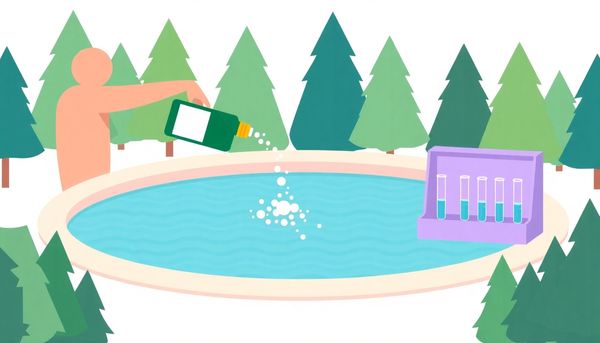
Stains on a pool's surfaces can be as stubborn as a cat refusing a bath. Yet, before reaching for muriatic acid, a word of wisdom: tread carefully. This acid is a double-edged sword—while it can effectively erase rust and other discolorations, it also has the potential to harm your pool's surface if not handled properly. Imagine using a blowtorch to light a candle; it works, but there's a significant risk of unwanted consequences.
My neighbor once learned this the hard way. Determined to remove a pesky rust stain, she applied muriatic acid directly onto the plaster without testing it first. The stain disappeared, but in its place, a noticeable patch of discolored plaster emerged—an expensive reminder of the acid's potency. To avoid such mishaps, always start with a small, inconspicuous area. Apply a diluted solution and observe how the surface reacts.
Moreover, never pour muriatic acid directly onto pool surfaces. Instead, mix it with water in a 10:1 ratio in a plastic container, stirring gently with a wooden stick. This ensures a controlled and safer application. Remember, safety gear is non-negotiable: goggles, gloves, and a mask are your best allies against the corrosive nature of the acid.
In the world of pool maintenance, patience pays off. By taking these precautions, you can effectively tackle stains without compromising the integrity of your pool.
In the realm of pool maintenance, handling muriatic acid requires a careful approach, like a chef with a delicate soufflé. This potent yet cost-effective chemical, though diluted, retains enough strength to demand respect and caution. Imagine stepping into your backyard ready to tackle your pool chores, only to have a splash of acid ruin your favorite T-shirt or worse, cause a nasty burn.
Safety begins with proper gear. A pair of acid-resistant gloves, goggles, and a long-sleeved shirt aren't just accessories; they’re your armor. You wouldn’t head into a painting project without covering the floors, and similarly, working with muriatic acid demands a layer of protection. And while it might seem like overkill, a mask can prevent inhaling harmful fumes, which is crucial when you’re leaning over the pool’s edge.
Next, consider your surroundings. Work in a well-ventilated area to disperse fumes quickly. Most importantly, always add acid to water—never the reverse. It’s a chemical golden rule akin to wearing a seatbelt. This simple practice prevents violent reactions and keeps your poolside experience calm and controlled. Once you're geared up and aware, the process becomes less daunting and more like a methodical dance.
Finally, remember to store the acid securely, away from children and pets. Just as you wouldn't leave sharp tools lying around, muriatic acid deserves the same consideration. With these steps, you can harness its power safely, ensuring your pool remains a sparkling oasis without the drama.
Muriatic acid may be a pool owner's best friend, but it can turn into a foe if not handled thoughtfully. When this potent chemical comes into contact with various materials, corrosion is a lurking danger. For instance, I once left a container of it on my garage floor overnight, and by morning, the concrete had a permanent reminder of my oversight. To prevent such mishaps, always store muriatic acid in a safe, well-ventilated place, away from metals and other materials that it might corrode.
When using muriatic acid in your pool, it's crucial to be precise. The acid's ability to swiftly lower pH and alkalinity can lead to unintended corrosion of your pool’s surfaces, especially if it’s not mixed adequately. Diluting the acid before adding it to your pool water is a simple yet effective way to minimize the risk. A common practice involves creating a solution with a ratio of 10 parts water to 1 part acid, ensuring it’s safely mixed before it comes into contact with pool surfaces.
Another pivotal step is regular monitoring. After introducing the acid, consistently test your pool's chemistry. This vigilance not only guards against overcorrection of pH but also helps you catch any early signs of surface corrosion. Remember, a little caution goes a long way in preserving both your pool's beauty and your peace of mind.
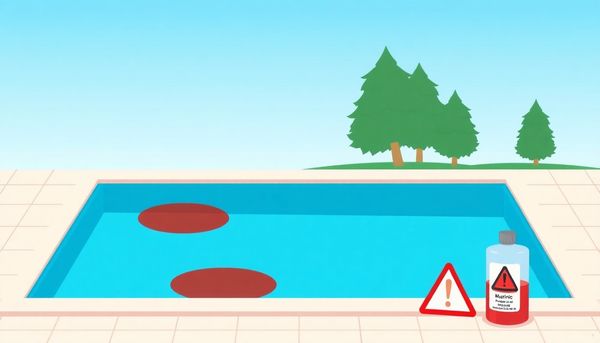
This article provided insights into maintaining your pool. Start your pool care journey today!
Want to become a pool maintenance expert? Our free Pool School course covers everything you need to know about pool care. From basic maintenance to advanced troubleshooting, you'll learn how to:
Join over 10,000 pool owners who have already transformed their pool care routine. Get started with our free Pool School course today!